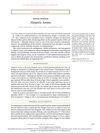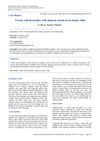Birth, Life, and Death of the MAGE3 Hypothesis of Alopecia Areata Pathobiology
August 2013
in “
Journal of Dermatological Science
”
TLDR The MAGE3 hypothesis for alopecia areata did not lead to a significant breakthrough.
The study investigated the role of MAGE-A3, a melanocyte-associated antigen, as a potential autoantigen in alopecia areata (AA) pathobiology. Initial results indicated an increase in MAGE-A3-reactive CD8+ T cells in acute AA patients, hinting at its involvement in the disease. However, subsequent analyses did not find MAGE-A3 expression in hair follicles at the mRNA or protein level, suggesting these T cells existed prior to disease onset. Although the hypothesis was disproven, the presence of MAGE-A3-reactive T cells in AA patients might still hold significance for future therapeutic approaches.

